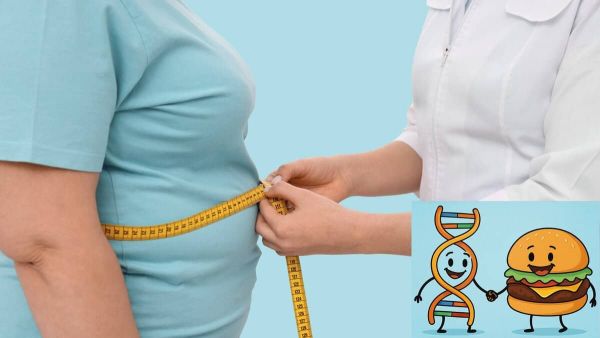
Lifestyle, diet and nutrition appear to be playing an equal or more important role in predicting obesity in Indians, a global study has pointed out.
So, for Indians, lifestyle solutions or specific nutrient supplementation in the background of genetic risk might yield better results, says Dr Giriraj Ratan Chandak of the CSIR-CCMB, Hyderabad, which was part of the global study titled ‘Obesity and its Genetic Basis in South Asians – Insights from Indian cohorts’.
The World Obesity Federation predicts that more than half of the global population will be overweight or obese by 2035. Obesity affects people worldwide, from children and adolescents to adults.
The problem is not only linked to social stigma but also increases the risk of non-communicable diseases such as diabetes, cardiovascular diseases, poor bone health, reproductive problems, and cancers.
What if we could prevent people from developing obesity?
The study published in the scientific journal Nature Medicine has thrown up very interesting results for different populations including Indians that need close follow up and further studies.
Obesity is a grave problem in India and other parts of South Asia given their incidences of diseases like diabetes, hypertension, and cardiovascular diseases. The pattern of obesity in India is notably different from that in Europe, with Indians tending to have more central (abdominal) obesity.
Earlier studies by Dr Chandak at the CSIR-Centre for Cellular and Molecular Biology (CSIR-CCMB), Hyderabad, showed that the genetic basis of non-communicable diseases varies significantly between Indians and Europeans.
In this study, researchers at CSIR-CCMB, led by Dr. Chandak, characterised the genomes of the Indian population. They included individuals with diabetes as well as those with normal blood glucose levels, who have been followed for nearly twenty years, providing a unique opportunity to investigate the genetic basis of obesity in Indians.
For the study, several obesity-associated genetic changes were identified and used to develop the PRS for Indians, effectively creating a “virtual individual” to model obesity risk. This data from Indian samples has served as a representative for the South Asian population in the study. Through this data, the study’s findings become more relevant for the Indian and South Asian populations.
The scientists examined the connection between a person’s genetic risk of obesity and the impact of lifestyle weight loss interventions, such as diet and exercise. They discovered that individuals with a higher genetic risk of obesity responded better to interventions but also regained weight more quickly once the interventions ended.
The study also highlights the influence of population ancestry on obesity risk prediction. Despite using genomes from a wider, more globally representative population, the Polygenic Risk Score (PRS) predicted obesity more accurately in people with European-like ancestry than in those with other ancestries, including Indians (South Asian ancestry).
Many gene variants previously associated with obesity in Europeans do not affect Indians which resonates with a different pattern of obesity in Indians. Dr Chandak said, “The observations made from this study are similar to the earlier results on height, where genetic variants identified in Europeans, predicted lower risk in Indians, and environment-related modifications of genes play a larger role.
An international team of 600 researchers across 500 institutions drew on the largest and most diverse genetic dataset ever, including genetic data from the GIANT consortium and consumer DNA testing firm 23andMe.
This provided access to genetic information from over five million people from different countries, including India. Using this data, they developed a genetic test called a polygenic risk score (PRS) that predicts adulthood obesity in early childhood.
This discovery could help identify children and adolescents already at higher genetic risk of developing obesity, who could benefit from targeted preventative strategies such as lifestyle interventions at a young age. Additionally, this score is twice as effective as the previous best test at predicting a person’s risk of developing obesity.
“What makes the score so powerful is its ability to predict, around the age of five, whether a child is likely to develop obesity in adulthood, well before other risk factors start to shape their weight later in childhood. Intervening at this point can have a huge impact,” says Assistant Professor Roelof Smit from the NNF Center for Basic Metabolic Research (CBMR) at the University of Copenhagen and lead author of the research that was published in the journal Nature Medicine.